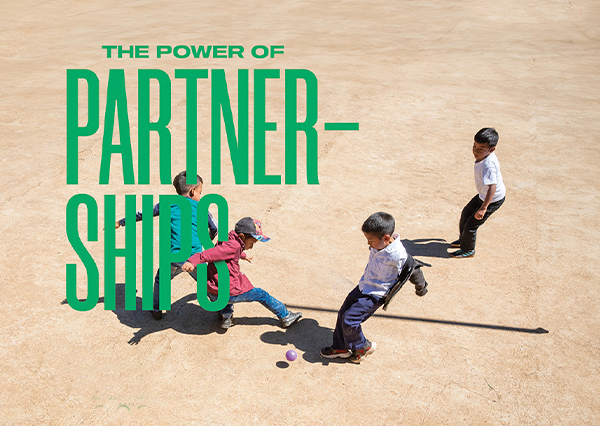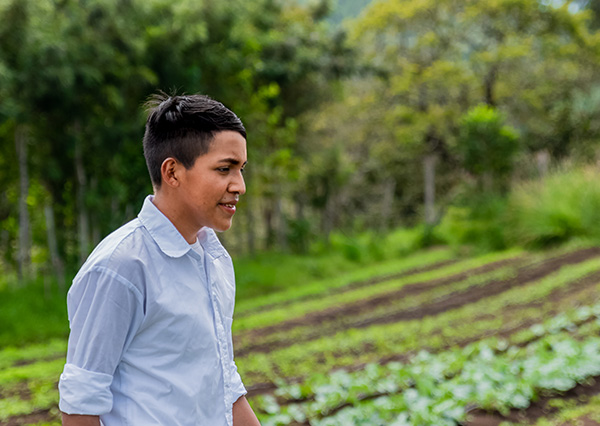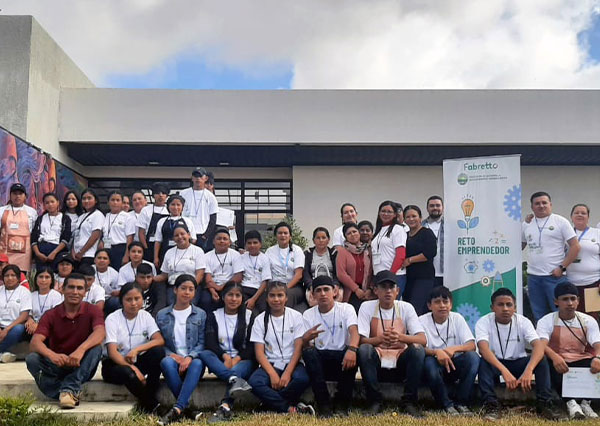10-16-14 | Success Story

We’re participating in Blog Action Day 2014, and this year’s conversation is about inequality. October 16th is also World Food Day! Inequality and food insecurity are closely linked. Read on to learn more about how empowering small producers can reduce inequality in rural Nicaragua!

Most families in the Fabretto supported community of Cusmapa practice subsistence agriculture, and their crops usually only support them for part of the year, which forces many of them to move to neighboring Honduras or El Salvador in order to earn a living the rest of the year. The new Chia pilot project started this year as an offshoot of Fabretto’s secondary education program is helping these communities in the second poorest country in the Western hemisphere break the cycle of poverty.
Here’s How:
1. Selling Chia allows subsistence farmers access to important global markets
Chia is new to the mountainous region of Cusmapa, where the only crops are corn, millón (a relative of wheat) and beans. The problem is that these sell for a very low price. In a drought year like this one, farmers may get about one dollar per pound of beans, a price that drops to about 25 cents in normal years. Now, thanks to Fabretto’s partnership with Mayorga Organics, Chia farmers will be able to sell organic Chia to Mayorga at an assured price of $2.20 per pound. This access to the global Chia market can make a huge difference in the quality of life in rural areas where the average income is less than two dollars per day.
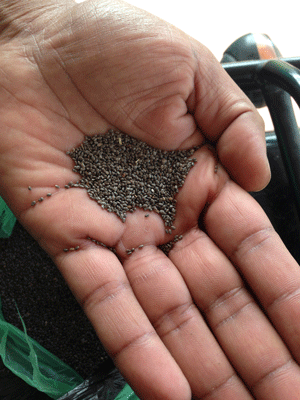
Chia seeds
2. Chia farming empowers community members to take the lead as small-business owners
Armando, a 29 year old former SAT student, is the first member in his community of El Terrero to plant Chia. At the beginning of the year he didn’t even know what Chia was. He admits that when Fabretto first came to him with the project he had to ask, “what’s Chia?”
Now, with Fabretto’s support, Armando has gone from knowing nothing about Chia to being a proud small-business owner. He receives a stipend in order to pay six members of the community help him work the Chia field. Not only is this careful handwork required in order for the crop to be certified organic, this way more of the community can benefit from this crop; Armando’s employees are supplementing their income while learning about organic farming practices.
Armando oversees some of his workers as they help clean his Chia field
3. Chia is helping farmers recover from Nicaragua’s worst drought in 30 years
Crops in the mountanous regions of Cusmapa are relied upon not only as a food source, but as an important source of income. In this area, farmers plant beans and corn twice a year, crops that make up an integral part of the daily meals of the region. This year, due to a drought that swept Nicaragua, the first harvest in Nicaragua turned up completely bare; Many plants did not even germinate. Without seeds from the first round of planting, many families were left with no seeds to plant in the second round of planting.
With support from Fabretto, farmers like Armando and his 6 employees now have a source of income which will ensure that they can support and feed their families.
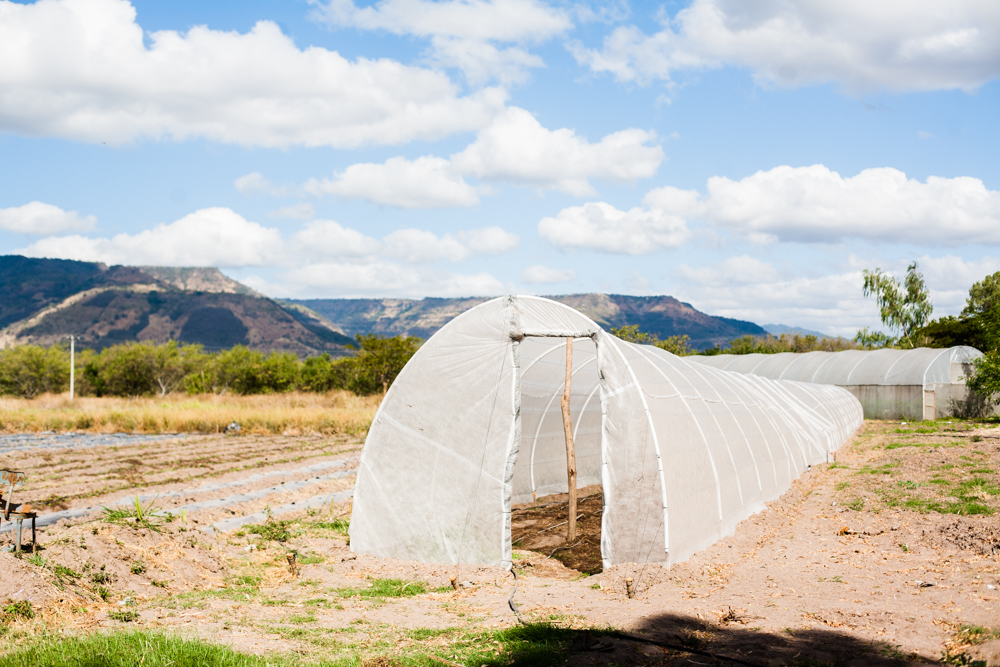
Northern Nicaragua during the drought
4. Chia is helping to shape a future generation of farmers knowledgeable in alternative crops
Holman, a current SAT student in the Cusmapa community of Angel 1, planted Chia for the first time this year. Watch the video at the beginning of this post to hear about how he is planning on learning from his first harvest to maximize his crop yield, and take advantage of this income-generating crop in the future.Training young farmers in alternative crop production means giving the next generation of Cusmapa’s farmers the tools to get the most from their land for many generations to come.
Young Chia plants, Cusmapa
You can support future Chia farmers by donating to support our rural secondary education program. Click here to make a difference!


.JPG)

